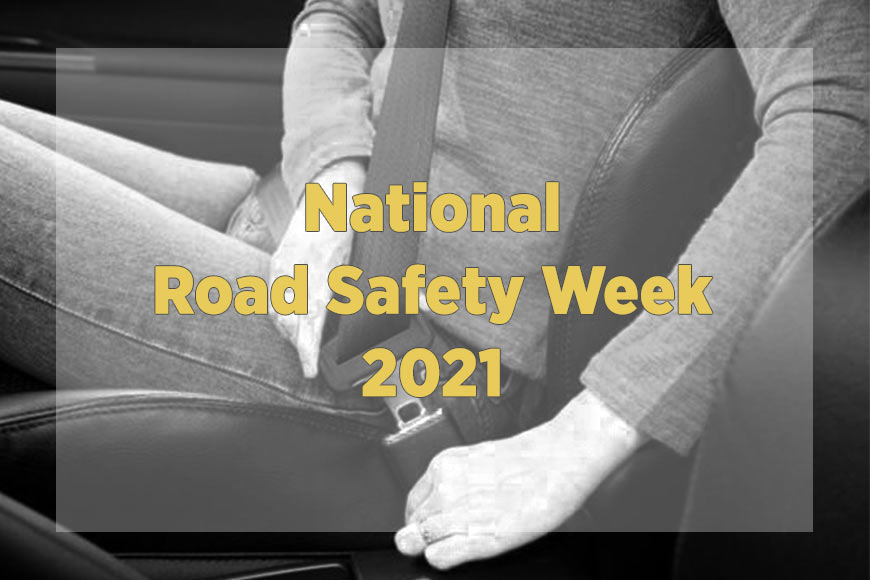Better safe than Sorry: Sensitizing citizens on Road Safety

Accidents on roads leading to deaths and injuries are a global phenomenon of immense proportions. Of all the systems that people have to deal with on a daily basis, road transport is the most complex and the most dangerous. In recent years, some important and major studies on the subject of road accidents and fatalities carried out by World Bank, World Health Organization (WHO), Transport Research Laboratory (TRL), and others have highlighted the growing significance of road accidents as a cause of death particularly in developing and transitional countries.
In the year 1999, between 750,000 and 880,000 people died due to road traffic crashes, while the World Bank in its study in 1998 estimated a total of 1 million deaths due to road traffic crashes. The figures demonstrate the severity of the problem globally.
When accidents became increasingly common in industrialized countries, they realized they were facing a new phenomenon – road accident was a man-made hazard. Road traffic crashes were no longer viewed with a “fatalistic” attitude, as a question of fate, but as a consequence of human actions. Therefore, they could be prevented.
In a report prepared jointly by WHO and World Bank and published on World Heath Day in 2004, estimated the number of people killed in road traffic accidents at almost 1.2 million, while the number of injured are as high as 50 million. According to WHO, road traffic injuries are the leading cause of death by injury worldwide (20.3 per cent of all deaths from injury). Road traffic injuries rank second to HIV/AIDS as the leading cause of ill-health and premature death for adult men aged 15-44 years.
Another shocking finding that comes to the fore is that the majority of road crash deaths, about 70 per cent occur in developing countries. Sixty-five percent of deaths involve pedestrians and 35 per cent of these pedestrians are children. Over 10 million are crippled or injured each year. It has been estimated that at least six million more will die and 60 million will be injured during the next 10 years in developing countries unless urgent action is taken.
When accidents became increasingly common in industrialized countries, they realized they were facing a new phenomenon – road accident was a man-made hazard. Road traffic crashes were no longer viewed with a “fatalistic” attitude, as a question of fate, but as a consequence of human actions. Therefore, they could be prevented. The second major change that followed was seeing the accident as a public health problem, therefore deserving special attention from the state. This status was reinforced by two combined features -- traffic fatalities increased to high levels and became as damaging as contemporary illnesses such as cardiovascular disease or cancer, causing large social and economic losses to society. The mobilization of society and the state around this issue led to new combined efforts in dealing with accidents.
To minimize common road accidents like car crashes, there are several precautionary road safety steps that can be taken for instance, wearing helmets while riding two wheelers, wearing seat belts when travelling by cars are the basic safety measures. Again, distractions like speaking on the phone while driving should be strictly prohibited.
But unlike developed countries, accident problem in developing countries has not yet assumed the status of a social issue. Public acknowledgement of the problem is still divided into conflicting views, ranging from the “fatalistic” to the “unavoidable-cost-of-development” approaches. Therefore, policy decisions have entailed different and sometimes conflicting actions, pursued independently by various public agencies, with poor outcomes. Meanwhile, in India, fatalities increased in an alarming way due to lack of adequate and planned road safety initiatives. Finally in 2005, the Government constituted a committee under the chairmanship of Mr S. Sundar, former Secretary (MoST) to study the issue and make recommendations on creation of a dedicated body on road safety and traffic management. The Committee was also subsequently requested to finalise a draft National Road Safety Policy for consideration of the Government. Based on Sunder Committee’s recommendations, the Union Cabinet approved National Road Safety Policy in March 2010. The policy outlines the initiatives to be framed / taken by the Government at all levels to improve the road safety activities in the country.
To minimize common road accidents like car crashes, there are several precautionary road safety steps that can be taken for instance, wearing helmets while riding two wheelers, wearing seat belts when travelling by cars are the basic safety measures. Again, distractions like speaking on the phone while driving should be strictly prohibited. Health care facilities should be close to roads at different sections and should be sufficiently equipped to aid medical care to road accident victims. Other than these specific rules, there are certain general rules as well which should be adhered to when driving or using public roads in general. They include knowing the road signals. Both the driver and the pedestrian should pay attention to the signal and follow them when on the road. Pedestrians should use sidewalks and pedestrians crossings and the most vital point is, only those with approved driving license should be allowed to sit behind the steering wheel.
It is important to sensitize the general public about the importance of road safety. This will further help create awareness and reduce accident rates and road mishaps. This can be done through seminars and education of children about the rules guiding road safety and consequences of flouting it. With strict adherence to road safety rules, it is certain that road casualties can be minimized.
India’s Ministry of Road Transport and Highways encourages regional governments to take the lead on Road Safety Week initiatives and provides a list of suggested activities to promote road safety in their region. The Ministry allocates a budget to each state to help them organize these activities and engage the public.
National Road Safety Week in India is organized every January by the National Safety Council of India (NSC). A theme is chosen for Road Safety Week each year. The NSC, along with regional governments, encourages schools and colleges, community groups, emergency services professionals and businesses to participate in Road Safety Week activities. The NSC provides a range of Road Safety Week resources to participants including posters, banners, badges and videos.
Road Safety Week is celebrated in the second week of January and this year, celebrations will be flagged off on January 11. Every year enthusiastic participants join in large numbers and the venue turns into a carnival. A variety of colourful programmes related to road safety are organized to encourage people to drive safely on the roads. This year will be no exception and people will be only too glad to join in the revelry after months of lockdown following the pandemic.











